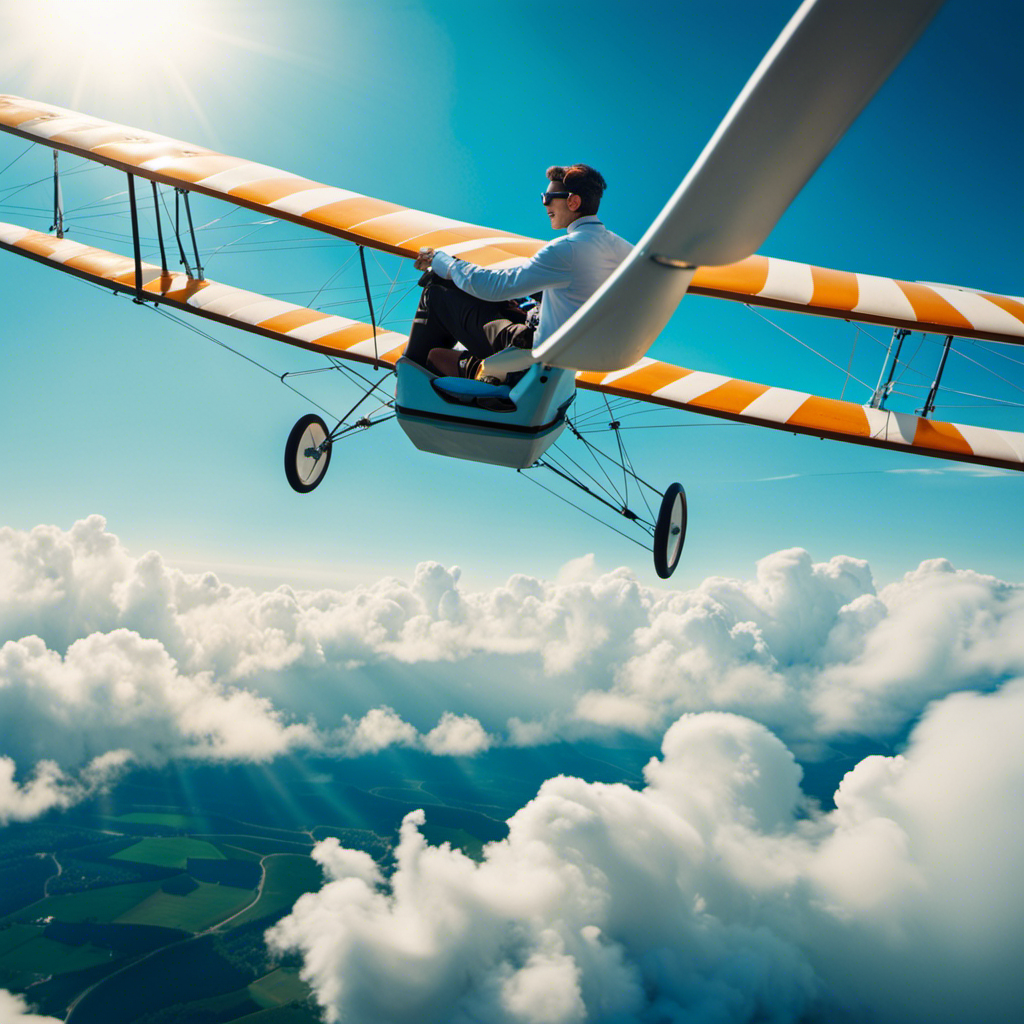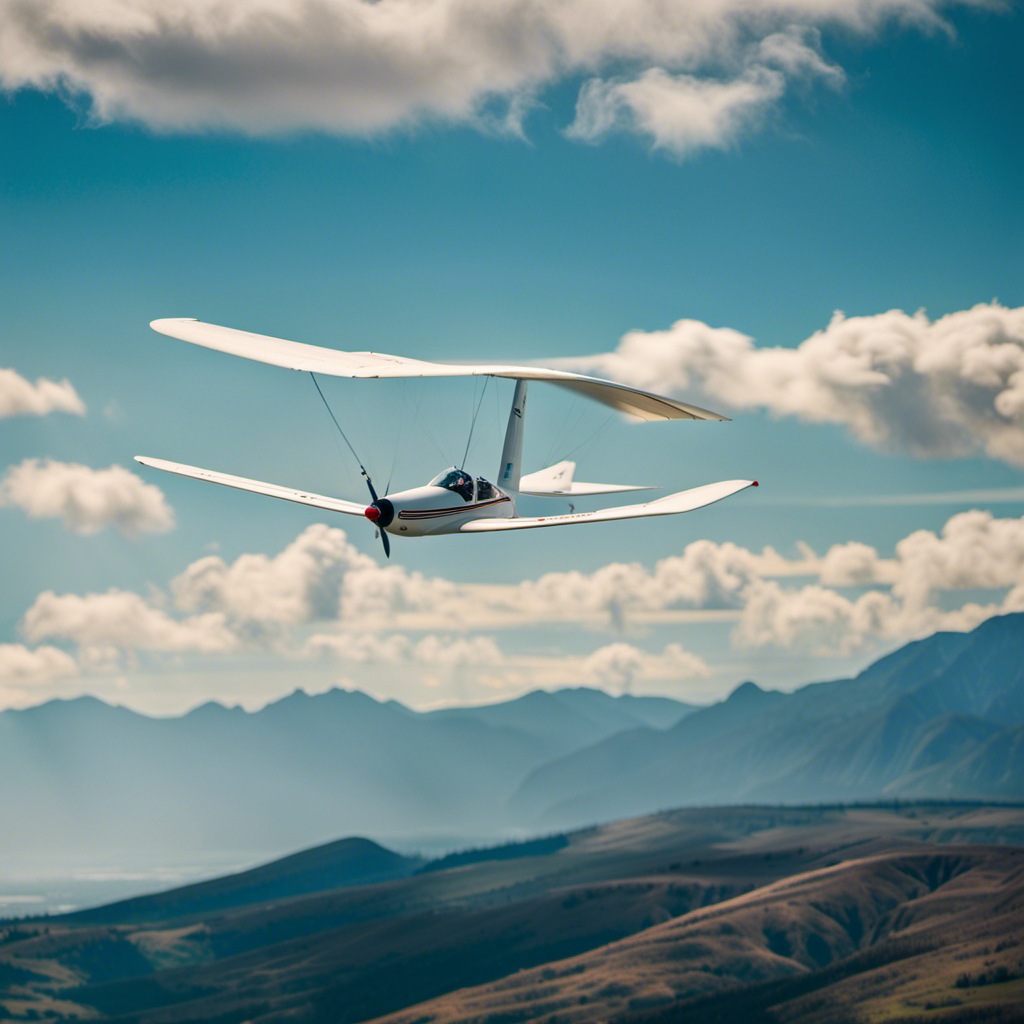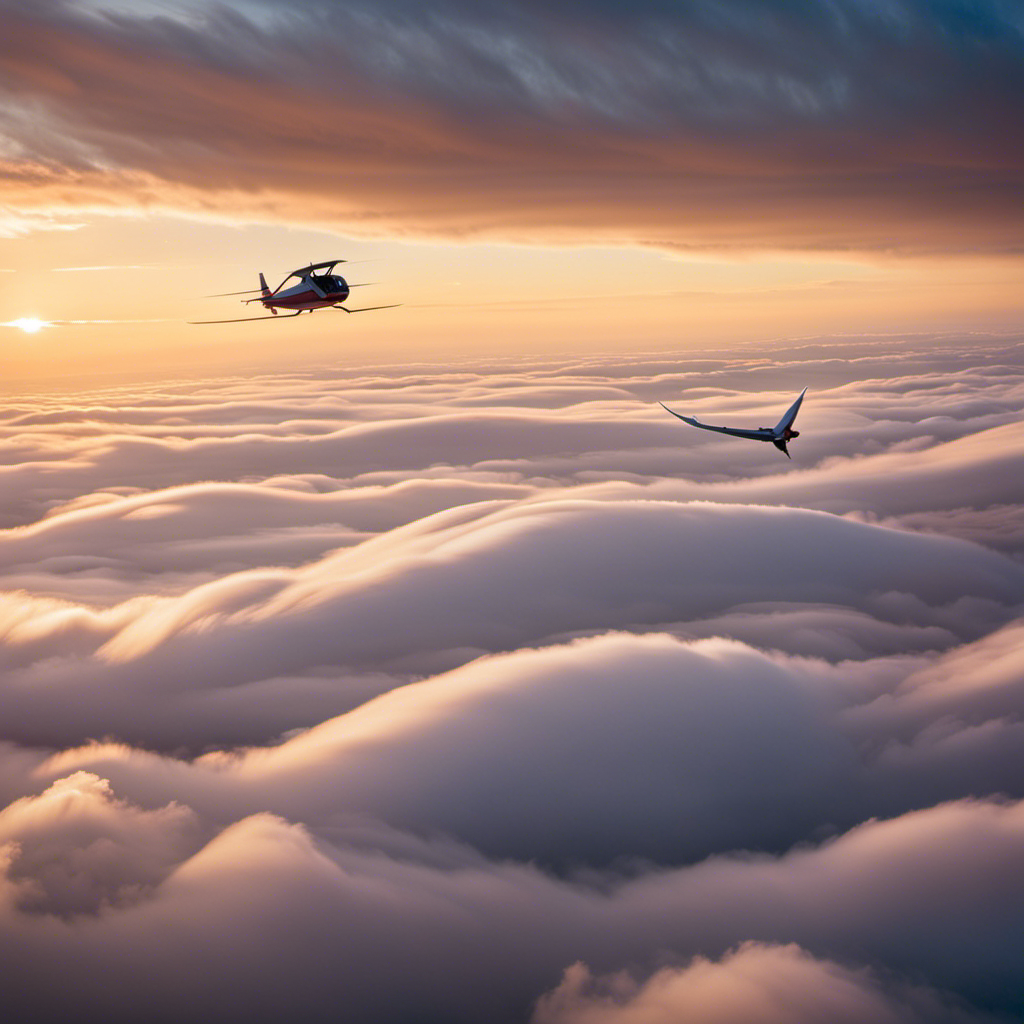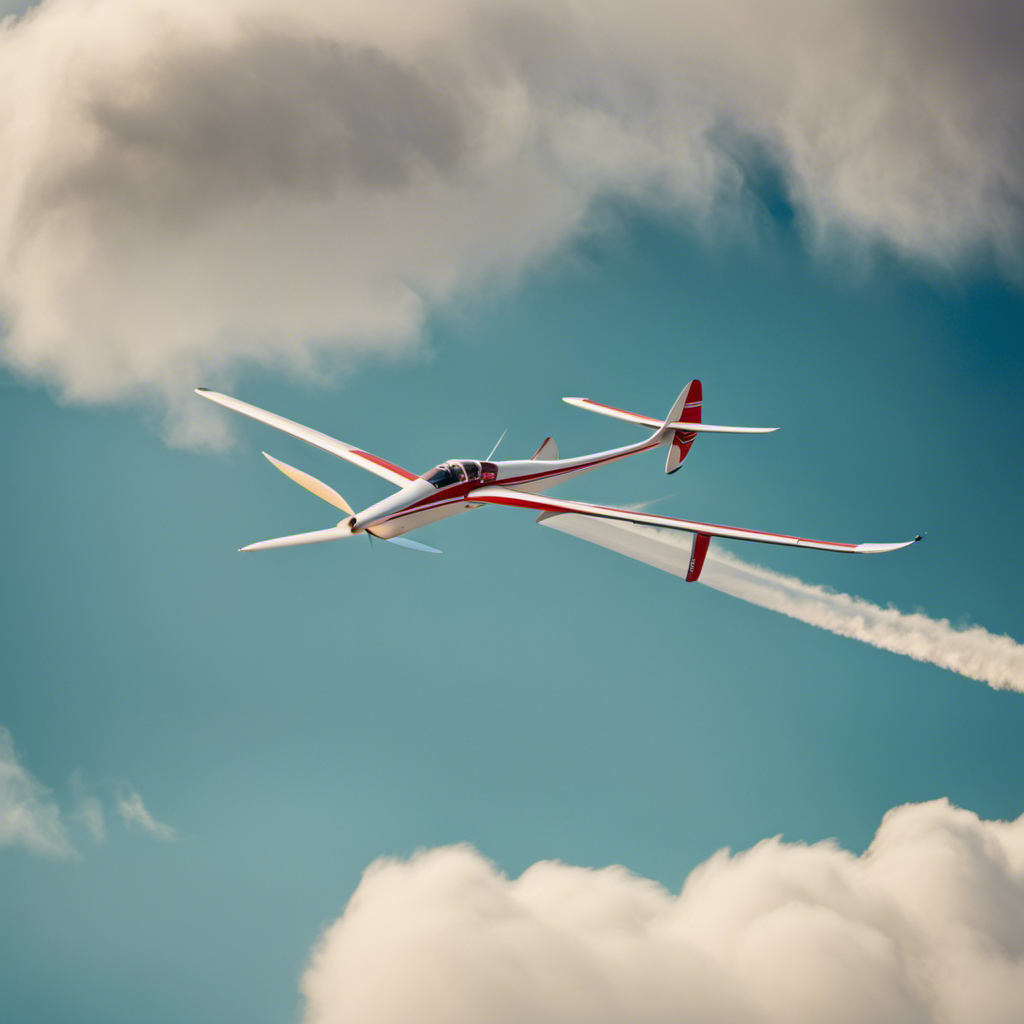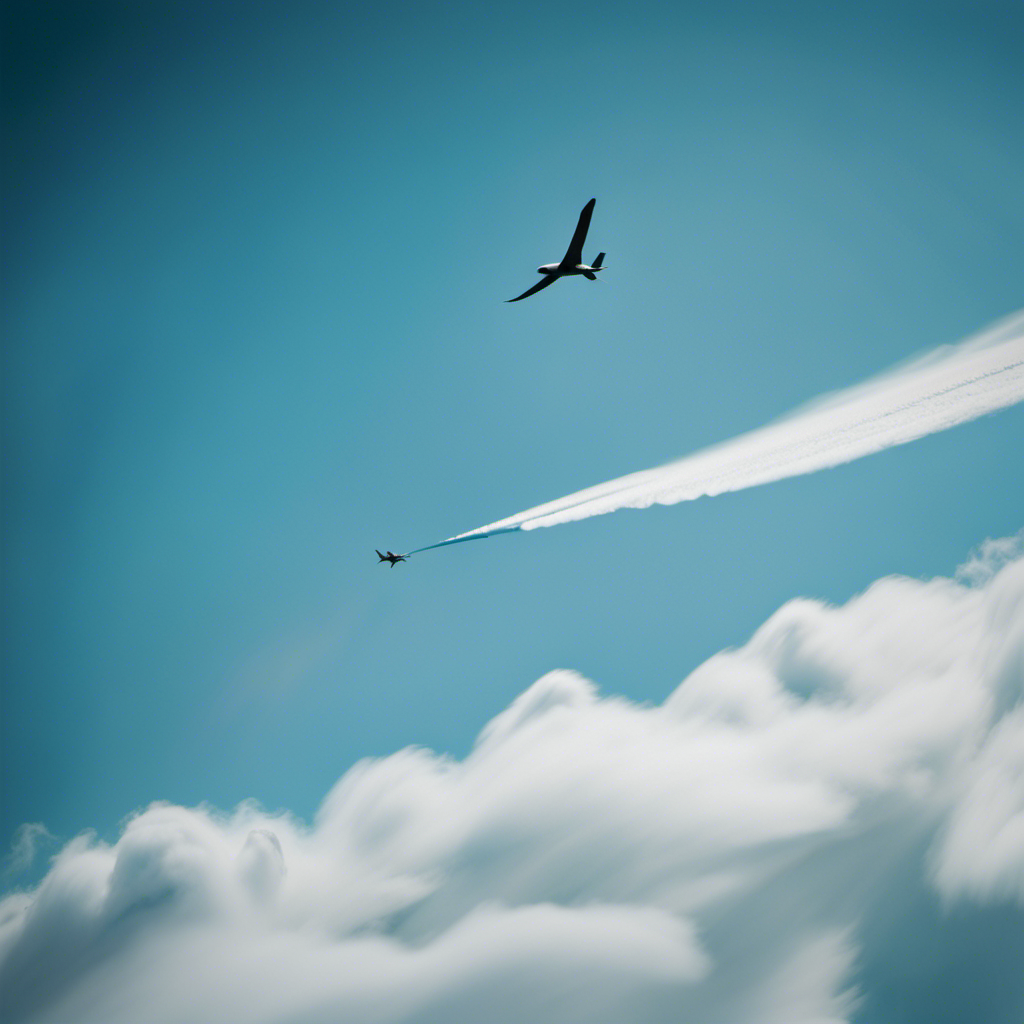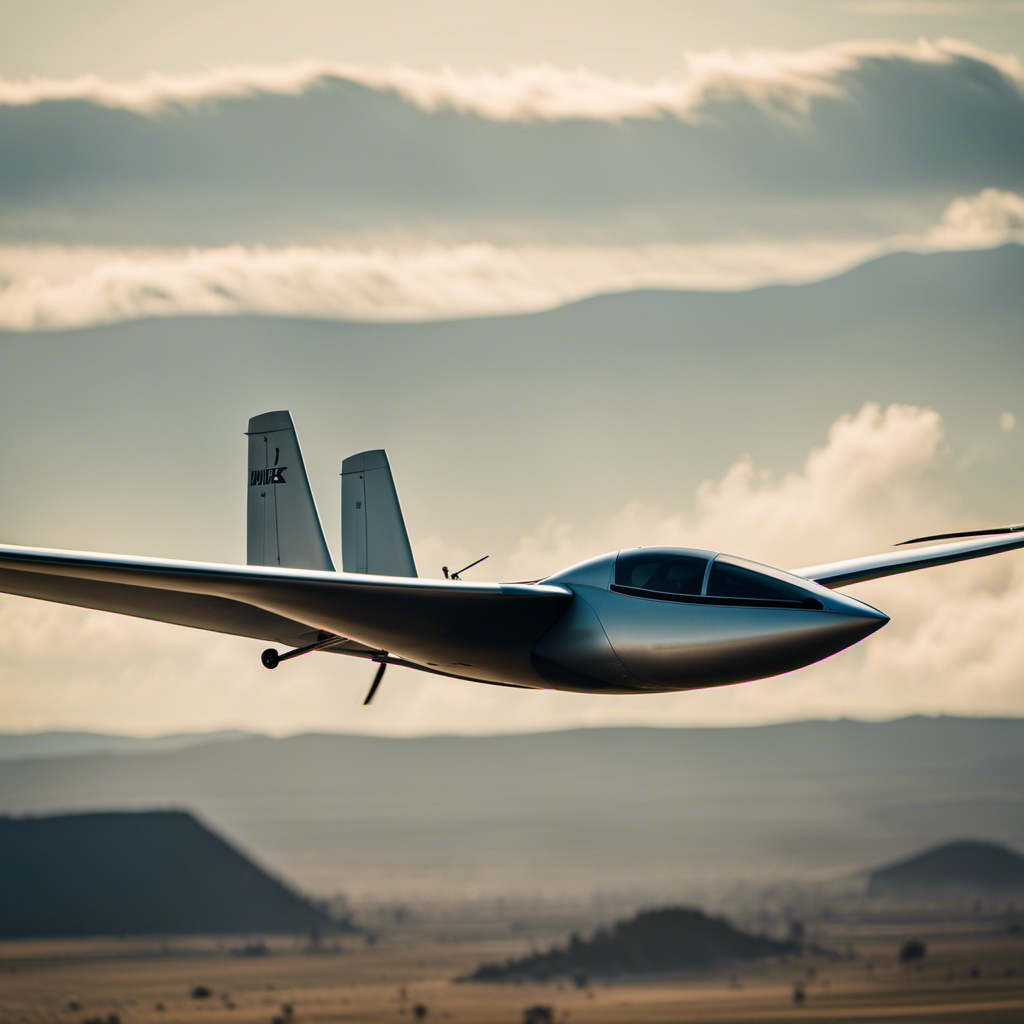As a glider pilot, I have to say that flying a glider provides a unique sensation. It feels like soaring through the sky on the wings of a bird, feeling the wind on your face and a profound sense of freedom within your soul.
But how old do you have to be to experience this exhilaration? In this article, I will explore the minimum age requirements for flying a glider, the regulations and considerations for glider pilots, and the advantages and challenges of starting young.
So, let’s dive into the world of glider flying and discover the age limits and possibilities.
Key Takeaways
- The minimum age to fly a glider is typically 14 years old.
- Aspiring pilots must meet licensing requirements, including a minimum age of 14 to fly solo and a minimum age of 16 to obtain a glider pilot license.
- Licensing and certification, supervision and training, as well as health and physical fitness requirements, are crucial for glider pilots.
- Training programs, experienced instructors, and parental involvement are important for young glider pilots.
Minimum Age Requirements for Flying a Glider
The minimum age to fly a glider is typically 14 years old. Before taking to the skies, aspiring glider pilots must meet certain licensing requirements and complete training programs.
These programs are designed to provide the necessary knowledge and skills to operate a glider safely and efficiently. Aspiring pilots will learn about aerodynamics, weather patterns, navigation techniques, emergency procedures, and much more. Additionally, they will gain practical experience through flight simulations and actual glider flights under the supervision of qualified instructors.
It is crucial for young pilots to undergo this training to ensure they are well-prepared and capable of handling the responsibilities that come with flying a glider. Once the training is complete, pilots must adhere to specific regulations and considerations to ensure the safety of themselves and others in the air.
Regulations and Considerations for Glider Pilots
When it comes to becoming a glider pilot, there are several important regulations and considerations to keep in mind.
Firstly, licensing and certification are crucial aspects of the process, as they ensure that pilots have undergone the necessary training and are qualified to operate a glider.
Additionally, supervision and training play a vital role in maintaining safety standards, with experienced instructors providing guidance and oversight to new pilots.
Lastly, health and physical fitness requirements are essential to ensure that pilots are physically capable of handling the demands of flying a glider.
Licensing and Certification
To fly a glider, you’ll need to obtain the appropriate licensing and certification. The first step is to meet the supervision requirements. Glider pilots must have a minimum age of 14 years old to fly solo, and 16 years old to obtain a glider pilot license. Additionally, there are medical restrictions that must be considered. Pilots must be in good health and meet the medical standards set by the aviation authorities. These standards ensure that pilots are physically capable of safely operating a glider.
Once you have met the age and medical requirements, you can begin the process of obtaining your glider pilot license. This involves completing the necessary training and passing both written and practical exams.
Now that we have discussed the licensing and certification process, let’s move on to the next section: supervision and training.
Supervision and Training
Once you’ve met the age and medical requirements, you can begin your glider pilot training.
Glider flying is an exhilarating sport that requires proper supervision and training to ensure safety. Parental involvement is crucial for young pilots, providing guidance and support throughout the training process.
Safety precautions are of utmost importance in glider flying. Before taking flight, pilots must undergo thorough pre-flight checks, ensuring the glider is in optimal condition. This includes inspecting the control surfaces, verifying the integrity of the wings, and examining the aircraft’s instruments. Additionally, pilots must be well-versed in emergency procedures and have a solid understanding of aerodynamics.
It is important to remember that glider flying is a physically demanding activity, requiring good health and physical fitness. Transitioning into the subsequent section, maintaining a high level of health and physical fitness is essential for safe and successful glider flying.
Health and Physical Fitness Requirements
Maintaining good health and physical fitness is crucial for safe and successful glider flying. As a glider pilot, I understand the importance of meeting the minimum fitness requirements set by aviation authorities. These requirements ensure that pilots are physically capable of handling the demands of glider flying.
Before taking to the skies, pilots must undergo regular medical examinations to assess their overall health and fitness levels. These examinations help identify any potential medical conditions that may affect the pilot’s ability to fly safely. By meeting these fitness requirements and undergoing regular medical check-ups, pilots can minimize the risk of in-flight health complications and ensure a smooth and enjoyable gliding experience.
Transitioning into the subsequent section about the advantages of starting young, it is important to note that age also plays a significant role in glider flying proficiency.
Advantages of Starting Young
Starting young in the field of glider piloting offers several advantages. One advantage is the opportunity to build experience and skills at a young age. This is important because the more flight hours a pilot accumulates, the greater level of proficiency and expertise they can achieve.
Another advantage of starting young in glider piloting is the potential for long-term career opportunities. For example, young pilots have the option to become flight instructors, which can provide valuable teaching experience and open doors to other aviation career paths. Additionally, starting young can also lead to pursuing a professional career as a commercial pilot.
Building Experience and Skills
To gain experience and skills in flying a glider, it’s important to log plenty of flight hours and practice various maneuvers. As a young glider pilot, there are both advantages and challenges that come with starting at a young age.
Here are some key points to consider:
- Advantages of starting young:
- Faster learning and adaptation to new skills
- Increased flexibility and resilience
- Longer potential career span
- Opportunity to develop a strong foundation in flying
However, there are also challenges and risks for young glider pilots:
- Limited access to resources and training opportunities
- Lack of experience and judgment
- Potential for increased vulnerability to external factors
- Need for proper guidance and mentorship
Long-Term Career Opportunities
Engaging in flight hours and practicing various maneuvers can help young glider pilots build a solid foundation for long-term career opportunities in aviation. Starting early in gliding provides several advantages, such as gaining experience and developing skills that can be invaluable in the future. Young pilots have the opportunity to learn from seasoned professionals, benefit from mentorship programs, and explore different areas of aviation. By accumulating flight hours and mastering maneuvers, they can enhance their chances of progressing to more advanced aircraft and obtaining higher-level certifications.
To illustrate the advantages of an early start, consider the following table:
| Advantages of an Early Start | |
|---|---|
| 1. | Increased exposure to aviation industry |
| 2. | Opportunities for mentorship |
| 3. | Enhanced prospects for career advancement |
However, it is important to acknowledge the risks that young pilots may face. These risks include limited experience, potential for overconfidence, and the need for ongoing training and education. In the next section, we will delve into the challenges and risks for young glider pilots, exploring how they can navigate these hurdles and continue to thrive in their aviation careers.
Challenges and Risks for Young Glider Pilots
The challenges and risks for young glider pilots can be significant, but with proper training and supervision, they can gain valuable experience in the sport. Glider flying requires mental maturity as it demands quick decision-making and precise control of the aircraft.
The risks versus rewards of this exhilarating activity should be carefully considered. While the thrill of soaring through the sky and the sense of accomplishment can be incredibly rewarding, there are inherent dangers involved. Young pilots must be prepared to face unpredictable weather conditions, turbulence, and the potential for emergency landings.
However, by undergoing comprehensive training and adhering to safety protocols, young glider pilots can develop their skills and experience the unparalleled joy of flight. With parental consent and support, these aspiring aviators can embark on a journey that will shape their future in aviation.
Parental Consent and Support for Young Glider Pilots
When it comes to young glider pilots, there are important legal considerations that must be taken into account. These considerations include obtaining parental consent and ensuring that the pilot meets the minimum age requirements set by aviation authorities.
Additionally, financial support and guidance play a crucial role in the development of young glider pilots. The costs associated with training and equipment can be significant.
Legal Considerations
To legally fly a glider, you must meet the minimum age requirement. The supervision requirements for glider flying vary depending on your age.
If you are under the age of 16, you must be under the direct supervision of a certified glider instructor or a qualified adult. This ensures that young pilots have the necessary guidance and support while operating the glider.
Additionally, physical health considerations are crucial for glider pilots of all ages. Good vision, coordination, and overall physical fitness are essential to operate a glider safely. Regular medical check-ups are recommended to ensure that pilots are in optimal health.
Now, let’s move on to the next section about financial support and guidance for aspiring glider pilots.
Financial Support and Guidance
If you’re looking for financial support and guidance as an aspiring glider pilot, there are various organizations and programs available to assist you.
When it comes to financing your gliding journey, there are financial assistance options that can help ease the burden. Many glider clubs and associations offer scholarships specifically for glider pilots, providing funds for training and certification expenses.
Additionally, mentorship programs are invaluable resources for aspiring pilots, connecting them with experienced glider pilots who can offer guidance and support throughout their training. These programs often pair you with a mentor who will share their expertise and provide valuable insights into the world of gliding.
By taking advantage of these financial assistance options and mentorship programs, you can receive the necessary support to pursue your dream of becoming a glider pilot.
Now, let’s explore the opportunities for older individuals to learn and fly gliders.
Opportunities for Older Individuals to Learn and Fly Gliders
There are plenty of opportunities for older individuals to learn and fly gliders. Many glider clubs offer supplementary training programs specifically designed for retired individuals or those looking for new activities during their retirement.
These programs provide a comprehensive curriculum that covers all aspects of glider flying, including theory, practical skills, and safety procedures. The training is conducted by experienced instructors who understand the specific needs and capabilities of older individuals.
The clubs also organize regular glider flying sessions, allowing older pilots to put their newly acquired skills into practice. It is truly inspiring to see individuals in their later years pursuing their passion for flying and embracing the thrill of soaring through the sky.
Now, let’s explore some inspiring stories of young glider pilots who have achieved remarkable feats and continue to push the boundaries of glider aviation.
Inspiring Stories of Young Glider Pilots
Take a moment to be inspired by the remarkable feats achieved by young pilots in the world of glider aviation. Starting young in glider flying offers several advantages.
Firstly, young pilots have a natural aptitude for learning and adapting to new skills, allowing them to quickly grasp the intricacies of glider handling.
Secondly, they have ample time to gain experience and hone their skills, which can lead to greater proficiency in the long run.
However, young glider pilots also face unique challenges and risks. They may encounter difficulties in managing their time between flying and other commitments, such as school or work. Additionally, young pilots may lack the maturity and experience to make sound decisions in challenging flying conditions.
Transitioning to the next section, let’s explore the frequently asked questions about age requirements for glider flying.
Frequently Asked Questions about Age Requirements for Glider Flying
Let’s find out the most commonly asked questions about the age requirements for flying gliders.
One of the advantages of starting young in glider flying is the opportunity to gain experience and skills at an early age. Young pilots have the advantage of being able to dedicate more time and energy to their training, allowing them to progress quickly.
However, there are also challenges for young pilots, such as the need for parental consent and the responsibility that comes with operating an aircraft. It is important for young pilots to demonstrate maturity, discipline, and a strong understanding of safety procedures.
Despite these challenges, the benefits of glider flying at any age are numerous. Glider flying offers a unique sense of freedom and allows pilots to develop exceptional flying skills. It is a thrilling and rewarding experience that can be enjoyed by people of all ages.
Benefits of Glider Flying at Any Age
As a glider pilot, I can attest to the numerous benefits that glider flying offers, regardless of age.
One of the key points is the immense stress relief and relaxation it provides. When you are soaring through the sky, all your worries and troubles seem to fade away, allowing you to fully unwind and recharge.
Additionally, glider flying offers a unique connection with nature and the sky. Being able to navigate through the clouds and feel the wind on your face creates a profound sense of freedom and awe, reminding you of the beauty and vastness of the natural world.
Stress Relief and Relaxation
Flying a glider can be a great way to unwind and relax. Not only does it provide a thrilling experience, but it also offers numerous benefits for stress management and mindfulness practice.
When gliding through the sky, you are fully immersed in the present moment, focusing on the sensations of flight and the intricate maneuvers required to navigate the glider. This level of concentration promotes mindfulness, allowing you to let go of worries and anxieties.
The peacefulness of soaring through the air, with only the sound of the wind, creates a serene environment that helps to alleviate stress. As you disconnect from the noise and distractions of everyday life, you find yourself connecting with nature and the sky, fostering a deeper appreciation for the beauty and tranquility of the world around you.
Connection with Nature and the Sky
Transitioning from the previous subtopic of stress relief and relaxation, let’s delve into the profound connection between nature therapy and glider flying. As a glider pilot, I’ve experienced firsthand the transformative power of this celestial connection. Allow me to elucidate the ways in which nature therapy intertwines with the art of soaring through the sky:
-
Immersing in the Elements: Gliding allows you to intimately interact with the elements of wind, sun, and clouds, fostering a deep connection with the natural world.
-
Heightened Senses: The silence and serenity of glider flight heighten your senses, enabling you to fully appreciate the beauty and tranquility of the surroundings.
-
Mindful Awareness: The act of piloting a glider demands focus and concentration, guiding you to be present in the moment and fostering a sense of mindfulness.
-
Therapeutic Escape: Flying amidst the vastness of the sky provides a therapeutic escape from the stresses and pressures of daily life, promoting relaxation and rejuvenation.
-
Harmony with Nature: Gliding allows you to witness the harmonious dance between the aircraft and the natural forces, cultivating a profound appreciation for the interconnectedness of all things.
Conclusion: Pursuing Your Dream of Glider Flying
Once you’ve gathered all the necessary information, you can start pursuing your dream of glider flying.
Starting young in the world of glider flying has its advantages. Younger pilots tend to have better physical coordination and adaptability, which are crucial skills in flying gliders. They have more time to develop their skills and gain experience, making them more proficient pilots in the long run.
However, challenges and risks can also arise for young glider pilots. The lack of experience and judgment can lead to poor decision-making in critical situations. It is important for young pilots to receive proper training and guidance to mitigate these risks. Additionally, the physical demands of glider flying can be taxing on young bodies, so it is crucial to maintain a healthy lifestyle and undergo regular medical check-ups.
Overall, with the right training, support, and dedication, young pilots can navigate these challenges and embark on a successful journey in glider flying.
Frequently Asked Questions
Are there any age restrictions for flying a glider solo?
There are age restrictions for solo flying a glider. To fly solo, one must meet the minimum age requirement set by the governing aviation authority. This ensures that pilots have the necessary skills and maturity to handle the responsibilities of flying solo.
Is there a minimum age requirement for taking glider flying lessons?
You need to meet the age requirement and be at least a certain minimum age to take glider flying lessons. It’s crucial to follow these guidelines to ensure safety and compliance with regulations.
Are there any maximum age limits for flying a glider?
There are no maximum age limits or age restrictions for flying a glider. As long as you meet the necessary physical and mental requirements, you can enjoy the thrill of gliding regardless of your age.
Do young glider pilots face any unique challenges compared to older pilots?
Young glider pilots face unique challenges compared to older pilots. These challenges include limited experience, physical limitations, and a higher risk tolerance. However, they also benefit from quicker reflexes, adaptability, and a fresh perspective.
What kind of parental support is necessary for young individuals interested in flying gliders?
Parental involvement is crucial for young glider pilots. They provide support, encouragement, and guidance throughout the training process. Additionally, financial support is necessary to cover the costs of lessons, equipment, and club memberships.
Conclusion
In conclusion, pursuing your dream of glider flying is an exciting and rewarding endeavor that can be enjoyed at any age. While there are minimum age requirements in place for glider pilots, it is never too early or too late to start.
Interestingly, statistics show that the average age of a glider pilot is around 50 years old, highlighting the fact that many individuals choose to embark on this adventure later in life. Regardless of your age, glider flying offers a unique and exhilarating experience that is worth exploring.
With a heart that soars as high as the skies, Aria, affectionately known as “Skylark,” is the driving force behind Soaring Skyways. Her journey into the gliding world began as a young dreamer gazing up at the soaring birds, yearning to experience the weightlessness and freedom they embodied. With years of experience both in the cockpit and behind the scenes, Aria’s commitment to the gliding community is unwavering.
